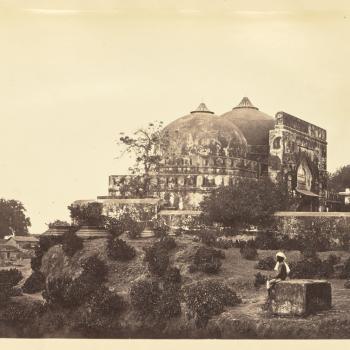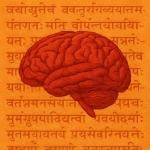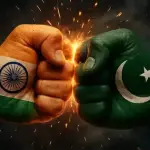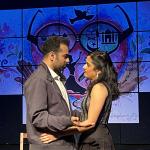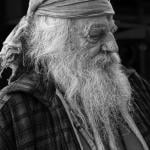December is an important month for World War 2 history. It marks the month when the United States entered the war, besides other important events in the European and Pacific theatres. Importantly, it also has significance to India’s contribution to the World War 2 effort. Here are a few samples of India’s participation.
India sent over 2.5 million soldiers (17% of the total British Empire strength) to fight under British command. Of which over 87,000 Indian soldiers (including those from modern-day Pakistan, Nepal, and Bangladesh) died.
Indian soldiers were deployed in Persia, Iraq, East Africa, North Africa, in Sicily, Italy and France and in Burma, South East Asia and Indonesia.
This is the largest volunteer army in history, though as in World War 1, many men were forced to “volunteer”.
Some 4,000 decorations. 32 Victoria Crosses were awarded to the Indian army. (3 of these to britishers in command). In total, the Victoria Cross was awarded 181 times to all British empire soldiers.
Indians thus received 18% of all decorations.
Ironically, the Victoria Cross was also awarded 182 times to Britishers for their gallantry in the 1857 War of Independence.
Indians were involved in fighting for both sides:
Serving under the British India Army, in North Africa and Middle East against Germany and Italy, 250,000 Indians were sent to fight and many of them were under equipped for the battles they faced in the desert.
They defended India against the Japanese, and also fought them in Burma. Indians also aided in liberating British colonies such as Singapore and Hong Kong after the Japanese surrender in August 1945.
But Indians also allied with the Axis powers, especially Japan, under Subash Chandra Bose’s INA and similar outfits.
17,000 Indians volunteered for the Royal Air force (not necessarily as pilots but also as groundstaff etc).
Material help
Equally critical was Indian material help. Weapons, ammunition, timber, steel and especially food, were transported – some say siphoned off – in vast quantities to Europe.
In World War 2, the quantity of Indian supplies was greater by several orders of magnitude than World War 1.
During the war, India provided 196.7 million tons of coal, 6 million tons of iron ore and 1.12 million tons of steel. 35 percent of India’s annual cotton textile production went into creating war material.
In order to pay for all these purchases, the Reserve Bank of India began printing cash, causing an inflation of 350%. India’s GDP contracted at around 2% every year of the war.
There are various estimates of how much Britain took out of India to support the war effort. Britain estimated this at 1600 crores in 1947. However, one Indian economist in 1947 estimated it to be 5700 crores. This second figure is about 15% of the total estimated British expenditure in World War 2. All figures are only estimates since such financial details were difficult to maintain and collate across such a vast geography and timescale.
Indian battles in World War 2
Battle of Imphal and Kohima: One of the deadliest battles Indians fought was around Kohima and Imphal in the northeast, against Japanese forces trying to take India.
The Japanese regard the battle of Imphal to be their greatest defeat ever, according to Robert Lyman, an expert on Japan in World War 2. Japanese military historians refer to it as one of the fiercest battles in world history. Nearly 15,000 Japanese troops attacked a lightly defended outpost held by some 1500 Indian troops.
The Japanese however had to withdraw after two weeks due to huge losses and lack of supplies thanks to impenetrable jungle on three sides. The US air force also continuously bombarded them.
After the battle, the reinforced Indian army, proceeded to push the Japanese army out of the whole area. The Japanese 15th Army, 85,000 strong for the invasion of India, was essentially destroyed, with 53,000 dead and missing.
This battle was the turning point of the Japanese army’s advance in Asia.
Many military experts considered it more crucial to Britain’s military history than even the D-Day landings and Waterloo.
Sadly, on the Japanese side were a large number of Indian troops captured after the fall of Malaya and Singapore who agreed to join the Japanese in hopes of creating an independent India.
Monte Cassino, Italy: This was one of the crucial battles in breaching the German defence line in Italy.
Three Indian divisions made up half of the Commonwealth force in the fight against German forces in Italy from 1943 to 1945.
In all, about 50,000 Indian troops mostly between the ages of 19 and 22, fought in Italy. Close to 50% of them were injured in the war. 5782 Indian soldiers laid down their lives.
Out of 20 Victoria Cross decorations given for bravery during the war in Italy, Indian soldiers won 6.
In 2007, the Italian government conducted a tribute to the Indian soldiers for their role. The story of their bravery and sacrifice is still talked about in Italian towns they helped to liberate, the Indian Ambassador to Italy Rajiv Dogra said on the occasion.
Dunkirk: Dunkirk was a crucial evacuation of Allied forces in 1940.
After the quick German advance through France had captured most of the French army, the British retreated and were pinned against the English channel on one side and German forces on another side.
The British government launched a huge evacuation force of all kinds of vessels – from destroyers and frigates to small boats and rafts – to evacuate 300,000 allied soldiers.
Indians served as transport companies with their mules and helped in the evacuation efforts. However, they were abandoned at Dunkirk and considered extra burden.
British regiment leaders who turned a deaf ear to these abandonment orders to get their Indian troops onto ships were later court martialled.
D-Day: Many Indian pilots flew sorties to cover the army landing in Normandy, when the allied forces finally launched the campaign to reconquer Europe from the Nazis.
Maratha Regiment Saved Italian Art Treasures: Over 261 exquisite pieces of Florentine art were discovered and rescued in July 1944 in Italy by the Maratha Light Infantry.
In Singapore: With the fall of Singapore in 1942, about 40,000 Indian soldiers were captured by the Japanese.
They were given a choice: 30,000 joined the Indian National Army.
Those who refused became prisoners of war POWs and were mostly shipped to New Guinea as forced labour.
Around 11,000 Indians died in Japanese camps from disease, malnutrition, physical abuse, or overwork.
Atrocities by Japanese on Indian soldiers
They were tortured if they did not work hard enough.
Sick men were flogged for working slowly.
Indian soldiers were taken away from the camps to the shooting range where they would be used as live targets for new Japanese infantry recruits to improve their marksmanship
Indian groups fighting for the Axis powers
Many Indian POWs joined the axis powers in the hope of fighting for India’s freedom.
Azad Hind Fauj or Indian National Army was declared to be the Army of Subhas Chandra Bose’s Arzi Hukumat-e-Azad Hind (the Provisional Government of Free India) under whose leadership, the INA drew ex-prisoners and thousands of Indian civilian volunteers from Malaysia and Burma.
They fought along the Imperial Japanese Army in Burma, Imphal and Kohima.
Indische Legion or The Free India Legion was a military unit raised in Nazi Germany to serve as a liberation force for British-ruled India. It was initiated by Subhas Chandra Bose. It largely contained Indian volunteers who were Prisoners of War (POW).
Battaglione Azad Hindoustan or the free India Battalion was a military unit formed in fascist Italy and was led by Mohammad Iqbal Shedai, formed with majorly ex-prisoners-of-war from India.
Quotes about Indian soldiers in World War 2
British Prime Minister Winston Churchill himself, who had said of Indians, “They are a beastly race with a beastly religion,” also acknowledged the “unsurpassed bravery of Indian soldiers and officers”.
Field Marshal Sir Claude Auchinleck, Commander-in-Chief of the Indian Army from 1942 asserted: “For many years now I have wished that the story of the old Indian Army in the Second World War might be written, so that the people of this country could learn what they owe to those soldiers who fought for them against the Germans, the Italians and the Japanese. Without their aid, the war could not have been won”
“Indian soldiers were the bravest of the brave. It was an honour to command them,” Major Tom Conway, one of the heroes of Battle of Alamein in North Africa in 1943, the first major defeat of German forces in Africa.



